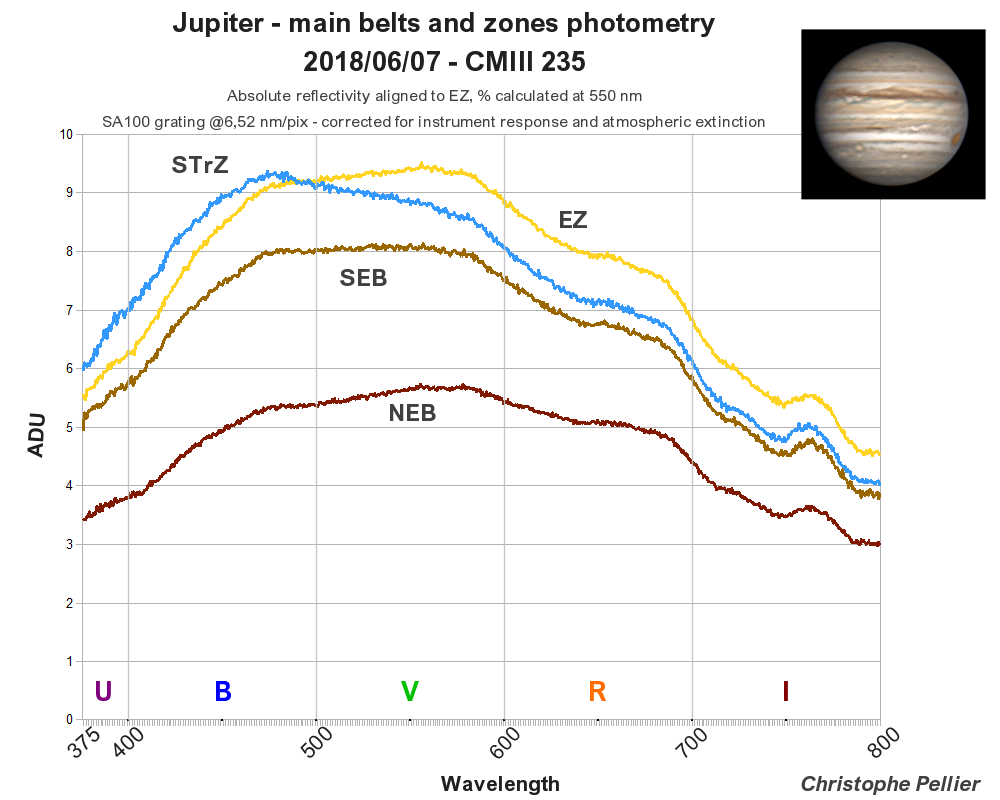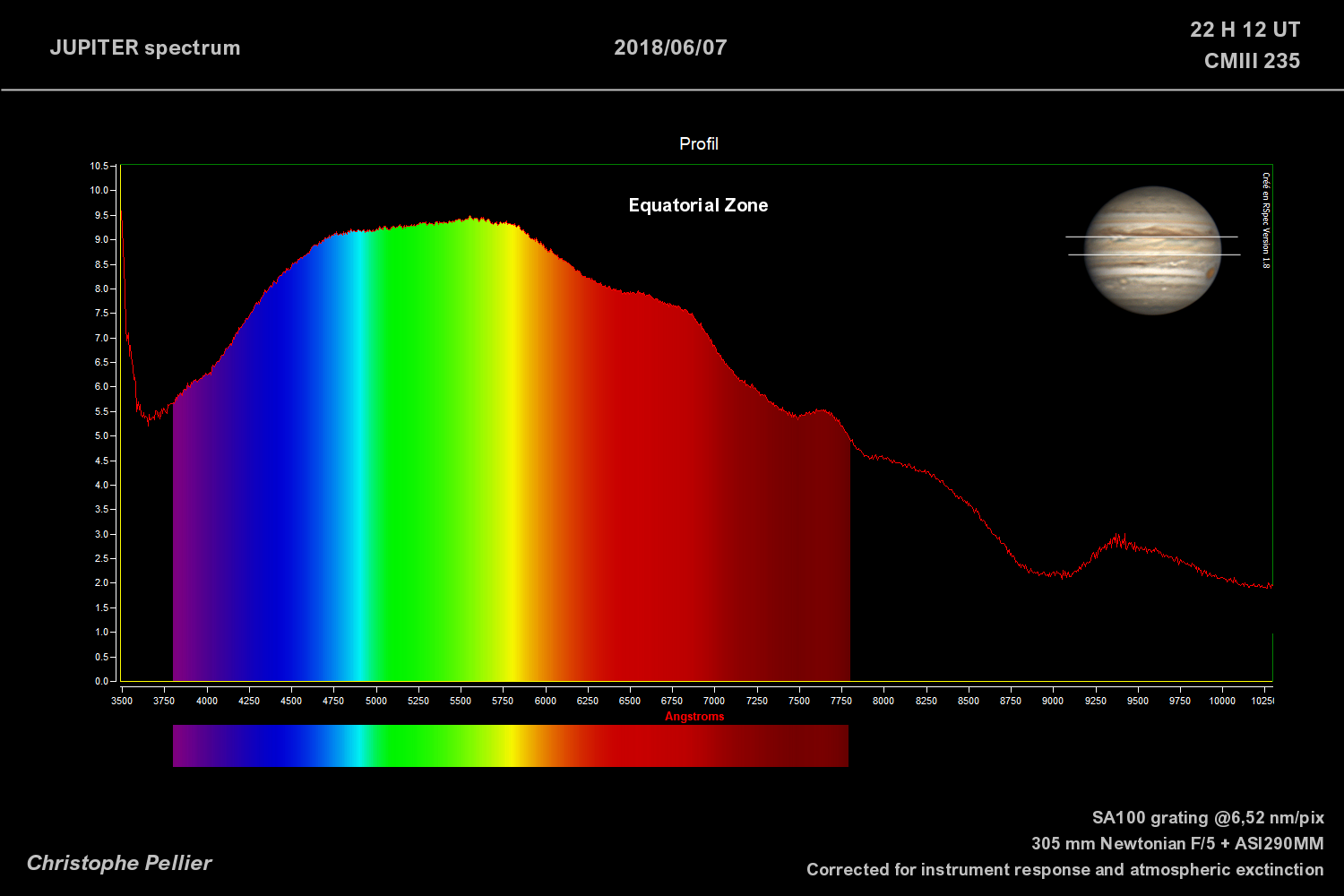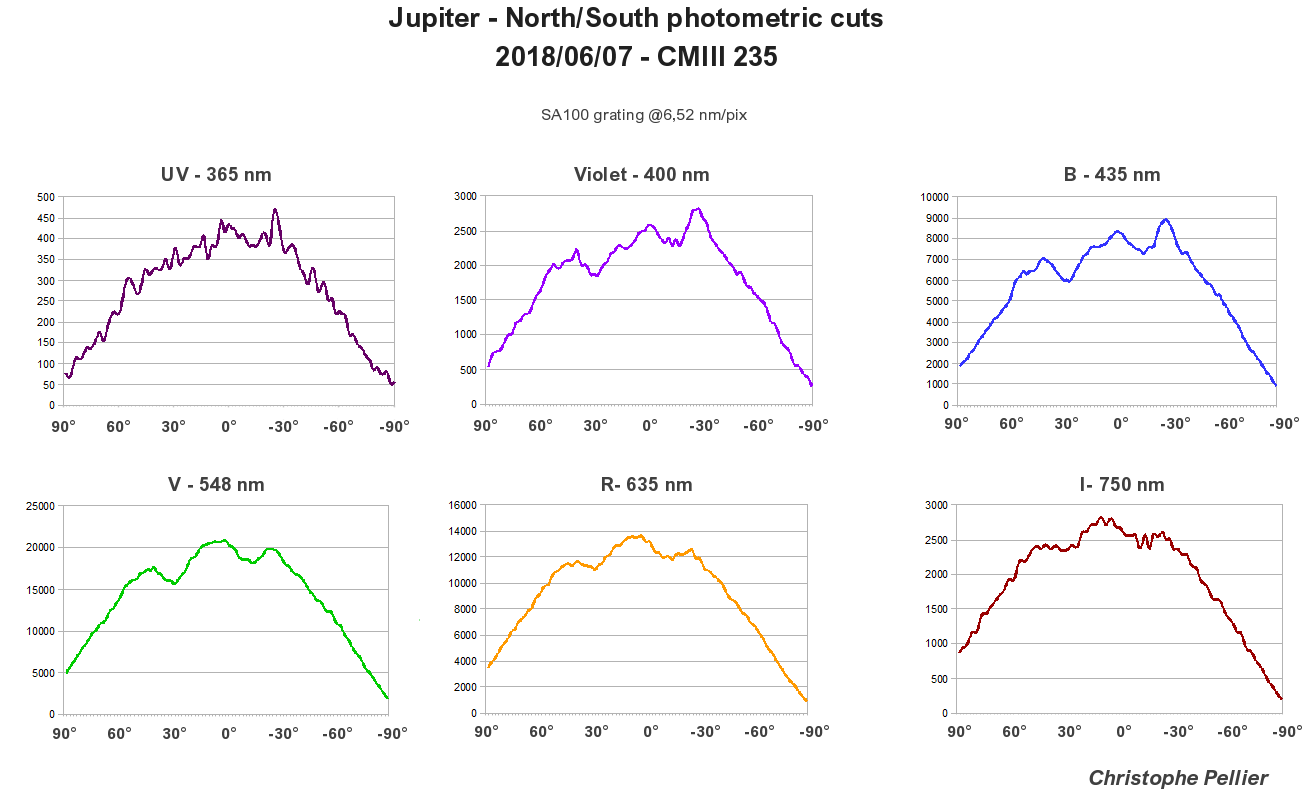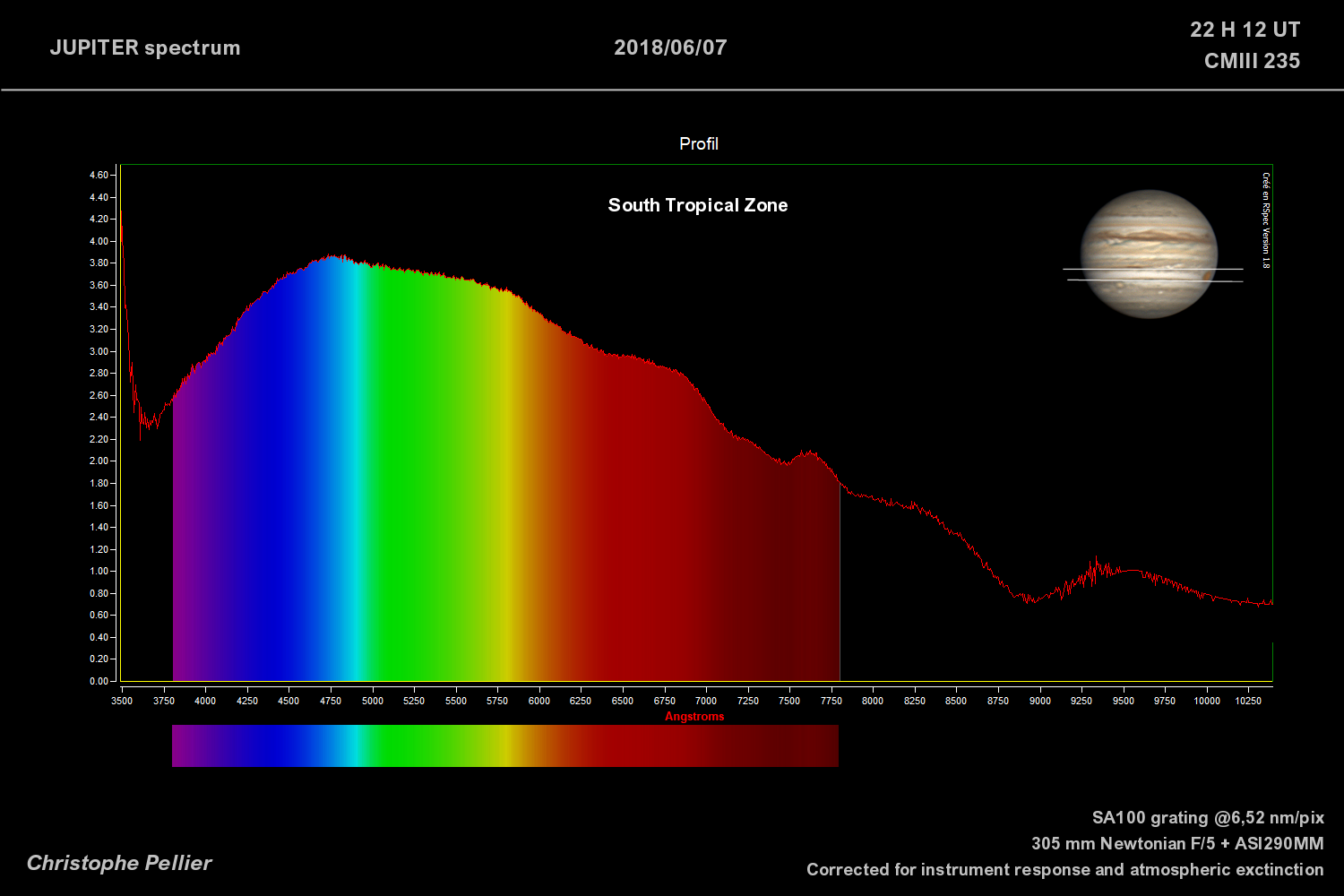| Jupiter photometry of belts and zones,2018 by Christophe.P |
Hi all, Over the last months I have tried to develop some methods for a more objective following of the evolution of jovian clouds colors. I'm using a Star Analyzer 100. If one rotates the camera in a right way, the low-res spectrum obtained is displaying values for all resolved belts and zones.
With a bit of care, it looked possible to extract smaller spectra for the main belts and zones,
so I cropped EZ, STrZ, SEB, and NEB (I'm skipping details of the process, it is more complicated than that). The spectra are corrected for instrument response and atmospheric exctinction using adjacent A3 star Beta Librae. The project was not to find the proper albedo of the planet
(which requires division by a G2V solar star) but to measure color photometry.
While in theory the instrumental response will not vary with the type of the reference star, it is just more easy to calculate with white or blue stars. You will find attached various presentations of some results: 1) A comparison of the absolute photometry of the four regions (... relatively to EZ).
The comparison is coherent with images taken at that time, with STrZ being the brightest region of the planet in UV and blue, while after 490 nm the EZ is recovering its normal first place.
The yellowness of the EZ can be deduced from its steeper drop in UV/B albedo. Without surprise, the two equatorial belts are noticeably less bright than the zones. 2) Individual spectrum for each of the four regions processed under Rspec, and one for the whole planet. 3) An attempt at making north-south photometric cuts for relevant wavelengths.
I tried to match the UBRVI johnson bands (only I is different, because the photometric I band's center wavelength falls on the CH4 absorption band!).
I've been trying to calibrate those but did not succeed and I would welcome help or advices. My project is to repeat that work for each jovian apparitions and to try enhancing objective color changes on main belts and zones. Maybe more ideas could follow ? Christophe PS I can give any detail of how I process the data if needed.







ALPO-Japan Latest
Jupiter Section